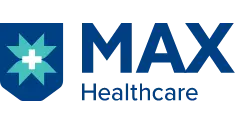Overview of Cardiology Treatment in India
Cardiology treatment is essential for addressing the diagnosis and treatment of diseases that affect the heart's structure and function. It covers a wide range of heart conditions, including cardiac failures, congenital heart defects, angina, arrhythmias, coronary artery disease, valvular heart disease, and cardiac tamponade. Common symptoms such as shortness of breath, irregular heartbeat, chest pain, and palpitations require effective treatment. Procedures like coronary artery bypass grafting, valve repair, angioplasty, and heart transplant play a crucial role in providing life-saving treatment for individuals with these conditions.
The cost of cardiology treatment in India ranges from ₹ 2,50,000 to ₹ 4,90,000 These diseases can be very dangerous if not treated on time. Sometimes doctors have to replace the damaged heart with a new healthy heart which is known as a heart transplant. A heart transplant is a treatment for the last-stage disease of the heart that cannot be treated with other treatment interventions.
Types of Cardiology Treatment in India
There are many types of treatment that are used in cardiology such as:
- Lifestyle Modifications
- Medications
- Angioplasty and Stent Placement
- Coronary Artery Bypass Surgery (CABG)
- Pacemaker Implantation
- Implantable Cardioverter-Defibrillator (ICD)
- Cardiac Rehabilitation
- Heart Transplant
- Valve Repair or Replacement
- Electrophysiology Studies
- Heart Failure Management
- Antiplatelet and Anticoagulant Therapy
- Cardiac Resynchronization Therapy (CRT)
- Heart Valve Repair or Replacement
- Laser Therapy
- Heart Assist Devices
- Ablation Therapy
- Thrombolytic Therapy
Lifestyle Modifications
Lifestyle modifications include a healthy lifestyle through changes in diet, exercise, weight management, and stress reduction. Increase in physical activity can be useful to treat conditions of the heart.
Medications
Many medications are used to treat different heart conditions. Medicines and rugs that are used in cardiology are specific to the type of disease.
Angioplasty and Stent Placement
Angioplasty treatment is used to treat conditions of narrow blood vessels. It is used in conditions like coronary artery disease.
Coronary Artery Bypass Surgery (CABG)
This is a procedure in which blood vessels from other parts of the body are used to create a new pathway of the blood flow. This is useful in the conditions that affect the blood vessels of the heart.
Pacemaker Implantation
This is the treatment where placement of a small device helps to regulate heart rhythms by sending electrical impulses to the heart muscle.
Cardiac Rehabilitation
A cardiac rehabilitation is a program that involves the exercise, education, and counseling to help the patient recover after a heart attack, surgery, or other cardiac diseases.
Heart Transplant
When the heart disease is not curable or at the end stage, a new healthy heart is implanted that takes the function of the damaged heart.
Valve Repair or Replacement
In this treatment, damaged heart valves are treated either with medications or with the help of surgery.
Heart Failure Management
The medications, eating habits and physical activity modifications are used to manage the patient after heart failure. It is useful in returning to normal activities just like before the disease.
Antiplatelet and Anticoagulant Therapy
When the blood clots form in the blood vessels they can create complications of the heart. To treat these blood clots antiplatelet therapy is used.
Cardiac Resynchronization Therapy (CRT)
In this treatment, a device is implanted which controls the electrical activity of the heart and is used to treat conditions like arrhythmias.
Laser Therapy
Laser therapy is used in some cases to remove fat buildup from arteries.
Heart Assist Devices
Some devices are designed to help the heart pump blood in cases of heart failure as a long-term treatment.
Ablation Therapy
It is used to treat arrhythmias by destroying the abnormal tissue that is causing the irregular heartbeat.
Thrombolytic Therapy
In this treatment of cardiology, medications are used to dissolve blood clots in specific situations, such as heart attacks.
Cost and Diagnosis of Cardiology Treatment in India
Some of the diagnostic tools that are used in cardiology are as follow:
Electrocardiogram (ECG/EKG): An examination that records the electrical activity of the heart and helps in the identification of irregular heart rhythms and other abnormalities.
Echocardiography: This test utilizes sound waves and generates images of the structure of heart and function.
Stress Test: This evaluation detects the response of the heart to physical exertion. It is often executed on a treadmill or stationary bicycle, to assess its performance during stress conditions.
Cardiac Catheterization: It involves guiding a catheter through blood vessels to access the heart. It is used to observe the blood flow patterns and measurements of pressure.
Coronary Angiography: A cardiac catheterization utilizes contrast dye and X-rays to visualize the coronary arteries and evaluate blood flow.
Cardiac MRI: By using magnetic fields and radio waves, this technique produces clear images of the heart's structure and function.
CT Angiography: A specialized CT scan that describes the detailed function of the heart's blood vessels and internal structure.
Holter Monitor: It is a portable device worn by the patient to continuously record the heart's activities for a span of 24 hours or more.
Event Monitor: Similar to a Holter monitor, this apparatus is worn for an extended duration and is activated by the patient at the time of symptoms.
Nuclear Stress Test: This test involves introducing a small quantity of radioactive substance into the bloodstream to assess blood circulation within the heart muscle.
Blood Tests: The blood tests include assessments of lipid profiles, troponin levels that indicate heart damage and other markers relevant to heart health.
Electrophysiology Study (EPS): This test requires the insertion of catheters into the heart to analyze its electrical system and identify abnormal rhythms.
Tilt Table Test: This test evaluates the cause of fainting episodes by monitoring the changes in blood pressure and heart rate during positional changes.
PET Scan: By using positron emission tomography, this method offers visual representations of blood flow and activity within the heart.
Myocardial Perfusion Imaging: This is a nuclear imaging technique that visualizes blood flow within the heart muscle.
Cardiac Rehabilitation
Cardiac rehabilitation is an important part of the recovery process after cardiac disease. This helps in improving the quality of life of patients and helps them to return to normal activities of daily living. Cardiac rehabilitation key factors are:
Purpose: Cardiac rehab helps in recovery after heart surgery or heart disease.
Elements: It involves the combination of exercise, education, and counseling.
Personalized: Treatment plans are provided according to each patient's needs.
Benefits: Cardiac rehab helps to Improves fitness, risk factor control and overall well-being of a patient.
Long-Term: Cardiac rehabilitation Promotes heart health and quality of life for a long period of time.
Cost of Cardiology Treatment in India
Some of the cardiology treatments in India range from ₹ 2,50,000 to ₹ 4,90,000 The cost can vary according to the condition of the patient and the types of heart disease. The cost can also vary according to the experience of the cardiologist.
| Cost of Cardiology Treatment in India |
Min in INR |
Max in INR |
| Coronary Angioplasty |
₹ 1,72,300 |
₹ 2,34,900 |
| Heart Bypass Surgery |
₹ 2,00,000 |
₹ 3,38,900 |
| Aortic Valve Replacement |
₹ 3,20,600 |
₹ 4,28,700 |
| Mitral Valve Replacement |
₹ 2,76,500 |
₹ 3,62,450 |
| ASD Defect Treatment |
₹ 2,12,899 |
₹ 2,85,600 |
| Heart Transplant |
₹ 21,80,000 |
₹ 29,10,000 |
| VSD Closure Surgery |
₹ 2,12,789 |
₹ 2,85,459 |
City Wise Cost of Cardiology Treatment in India
| Cardiology Treatment Costs in Different Cities of India |
Min in INR |
Max in INR |
| Cardiology Treatment Cost in New Delhi |
₹ 1,65,900 |
₹ 2,90,800 |
| Cardiology Treatment Cost in Gurgaon |
₹ 1,68,700 |
₹ 2,54,500 |
| Cardiology Treatment Cost in Noida |
₹ 1,58,700 |
₹ 2,65,789 |
| Cardiology Treatment Cost in Chennai |
₹ 1,65,456 |
₹ 2,45,900 |
| Cardiology Treatment Cost in Mumbai |
₹ 1,70,890 |
₹ 2,61,300 |
| Cardiology Treatment Cost in Bangalore |
₹ 1,63,450 |
₹ 2,50,500 |
Symptoms & Risk Factors of Cardiology Treatment in India
Some of the systems that are associated with cardiology are as follow:
- Chest pain known as angina
- Shortness of breath or dyspnea
- Fatigue and weakness
- Rapid or irregular heartbeat or arrhythmias
- Dizziness or lightheadedness
- Swelling in the legs, ankles, or feet
- Coughing, especially at night
- Fainting or syncope
- Palpitations or awareness of heartbeats
- Nausea or vomiting
- Bluish tint to skin or lips
- Cold sweats
- Difficulty breathing during physical activity
- Persistent cough
- Elevated blood pressure (hypertension)
- Chest discomfort or pressure
- Fluttering in the chest
- Racing heart
- Pain in the neck, jaw, or upper abdomen
- Rapid weight gains due to excess of fluid
- Irregular pulse
- Excessive fatigue with minimal exertion
- Pain radiating down the left arm
- Numbness or tingling in the arms
- Feeling of impending doom or anxiety
- Sensation of a skipped heartbeat
- Coughing up blood
- Abdominal swelling or bloating
- Excessive sweating
- Heart murmur that are known as abnormal heart sounds
- Elevated cholesterol levels
- Feeling of fullness or indigestion
- Heartburn
- Swelling of the abdomen
- Increased urination, especially at night
Risk Factors of Cardiac Diseases
Some of the risk factors that are associated with cardiac diseases are as follow:
High Cholesterol : High levels of cholesterol can accumulate fat in the blood vessels and can lead to many heart and blood vessels disease.
Smoking : Smoking is the major cause of heart diseases. It can lead to the development of heart failure and narrow blood vessels.
Diabetes : People with diabetes are at higher risk for heart disease due to blood vessel damage and other heart related factors.
Obesity : Excess of body weight can increase the workload on the heart that may lead to other risk factors like high blood pressure and diabetes.
Family History : A positive family history of heart disease can increase the risk of developing heart diseases.
Age : There is a positive correlation between the older age and developing heart diseases.
Gender : Men are at higher risk of developing heart diseases than women of the same age.
Physical Inactivity : A poor inactive lifestyle can lead to obesity which is a major risk factor of developing heart disease.
Unhealthy Diet : Diet that is rich in fats and salty food and low in vegetables and fibers can lead to heart diseases.
Stress : Stress can increase the risk of heart diseases. High stress activities are the major risk factor in heart failure.
Alcohol Consumption : Excessive alcohol intake can increase the risk of high blood pressure, heart failure, and other heart-related problems.
Sleep Problems : Problems of sleep and inadequate sleep can put extra stress on the heart that can also increase the risk of heart failure.
Chronic Kidney Disease : Kidneys excrete waste and fluids from the body. Due to inadequate kidney function of the kidney, fluid and waste can accumulate in the body that can be a problem for the heart. In this way, kidney problems can increase the risk of heart disease.
















